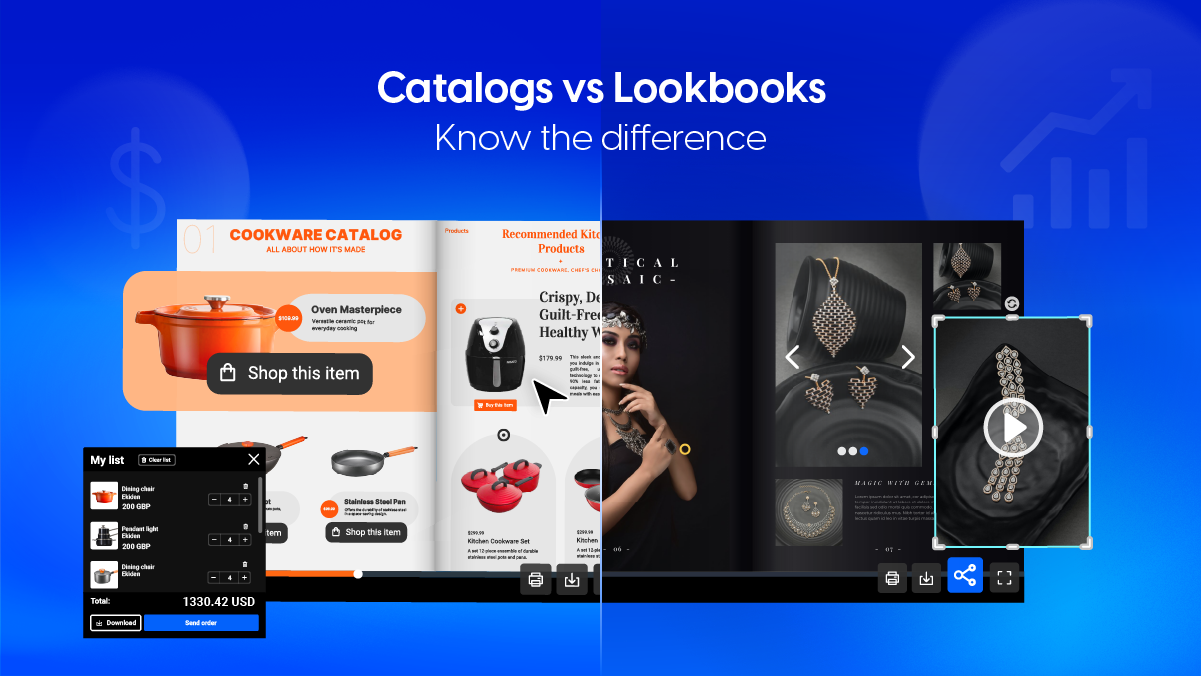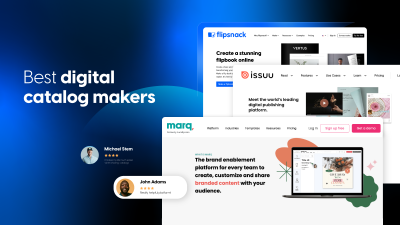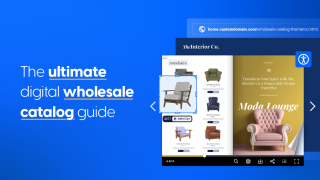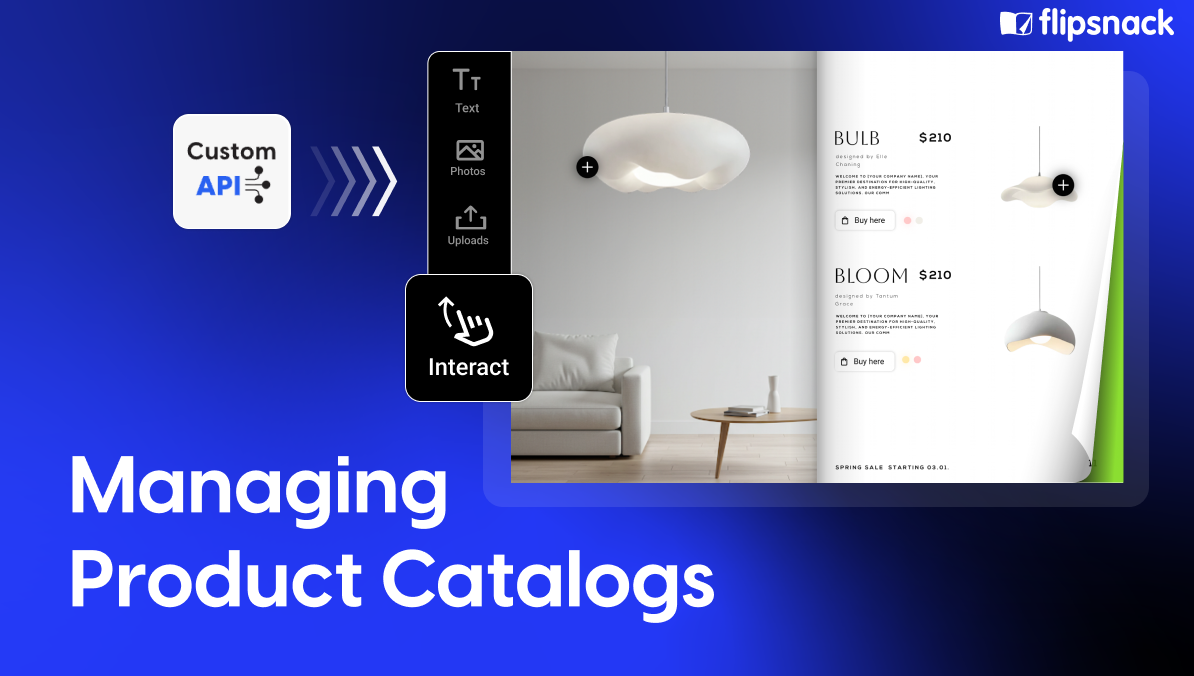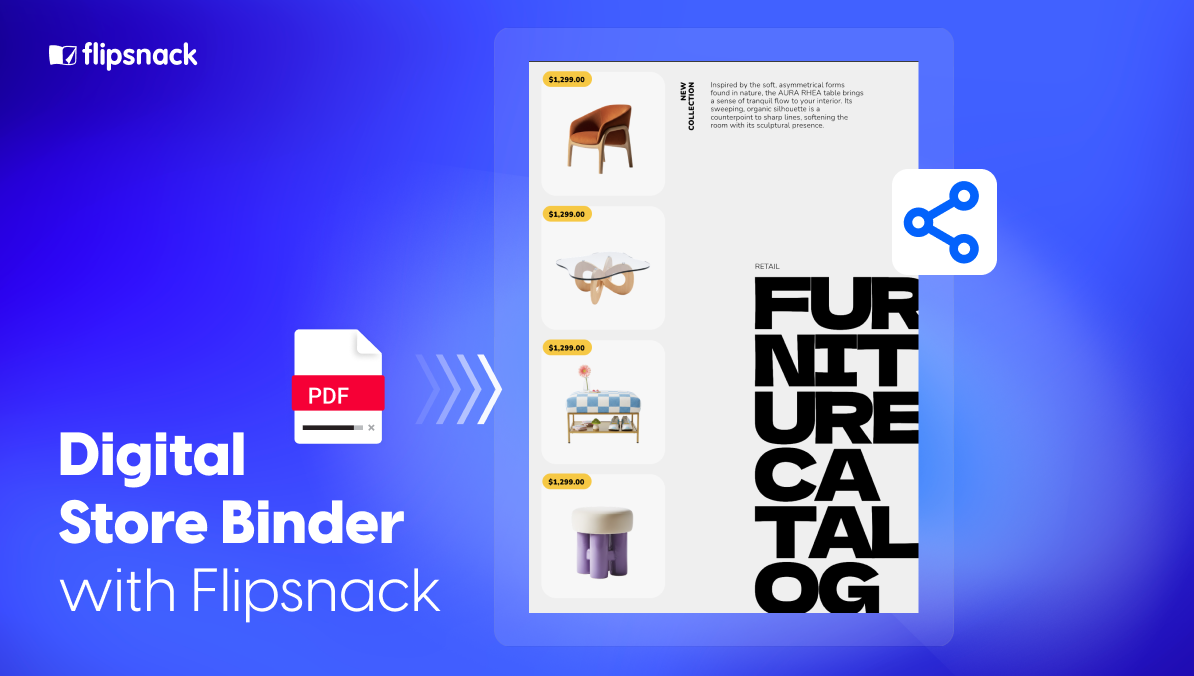Lookbooks vs. Catalogs: How they differ and when to use them
Last update: 27th of March, 2025
Many businesses face a familiar challenge when showcasing products effectively: how do you balance practical product information with inspiring visual storytelling—especially at scale? This is where catalogs and lookbooks come in, two of the most versatile formats for product presentation. While they might seem similar, most brands mix them up. But they serve completely different purposes. Catalogs are designed to inform, offering detailed specs, pricing, and product data. On the other hand, lookbooks are crafted to inspire, using imagery and narrative to create an emotional connection.
Understanding the differences between a lookbook fashion catalogue and a product catalog helps ensure your materials resonate with your audience and meet your marketing goals. Whether you’re preparing for a product launch, a seasonal collection, or a trade show, this guide will help you decide between a lookbook vs a catalog and show how digital tools like Flipsnack make it easy to create both.
Table of contents
What is a catalog?
Catalogs are practical tools designed to inform. They display product details in a comprehensive overview of products or services, often containing detailed specifications, pricing, sizes, and materials. Businesses use catalogs to help consumers make informed purchasing decisions by offering all the information necessary in one place. This makes catalogs especially useful in B2B, wholesale, and retail industries where decision-makers need all the data before making a bulk or individual purchase.
Think about Electrolux, a global leader in home appliances. They use digital catalogs to distribute consistent, interactive product information across 17 countries, ensuring their trade partners always have the latest details at their fingertips. With a digital catalog, Electrolux not only improved efficiency but also modernized the way it connects with partners globally.

What are lookbooks?
Lookbooks are all about inspiration and storytelling. Their main purpose is to create a visual narrative or emotional connection that draws customers in with mood, style, and aspirational pictures. The key difference between a lookbook vs catalog comes down to intent: lookbooks inspire, while catalogs inform.
They are often used in the fashion, lifestyle, or luxury sectors, where storytelling is key to connecting with audiences. A lookbook emphasizes the mood, lifestyle, or aesthetic surrounding a product, rather than the product details themselves. The focus is on emotions that inspire customers to explore more.
Before diving deeper, here’s a quick comparison between catalogs and lookbooks to highlight their core differences and help you choose the right one for your business:
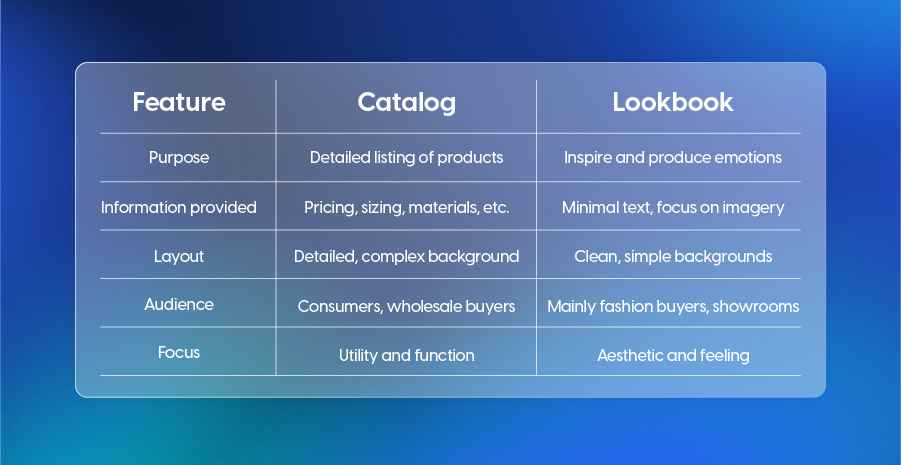
Choosing the right format for your business
Choosing between a catalog and a lookbook starts with a clear understanding of your business goals and your audience’s expectations. While both formats are powerful tools for showcasing products, they serve very different purposes—and making the right choice can significantly improve how your customers engage with your brand.
Here’s how to decide which format fits your strategy:
1. Focus on functionality or feeling?
- Go with the catalog if your goal is to inform, compare, and drive purchases based on detailed product information. This is especially effective for wholesale buyers, retailers, or manufacturers, where pricing, specs, and availability are decision-making drivers.
- Go lookbook if your goal is to inspire, attract, and build brand identity through visual storytelling. This is ideal for fashion, luxury, home decor, or lifestyle brands, where emotional resonance and aesthetics matter more than technical specs.
2. Consider your industry’s buying journey
- Manufacturing & Wholesale: Buyers need structured, data-rich catalogs to evaluate products efficiently. This is where digital catalogs shine, offering interactive features and real-time updates.
- Fashion, Luxury, and Home Decor: Purchases are often influenced by visual context and trends. A lookbook allows you to craft narratives around collections or seasonal themes that evoke desire and inspire action.
3. Match the format to the campaign
- Launching a new collection? A lookbook helps build buzz, emotion, and brand engagement.
- Attending a trade show or selling to partners? A catalog ensures clarity, consistency, and easy access to product data.
But if you need both, many brands use lookbooks for awareness and catalogs for conversion—especially in multi-channel campaigns.
Determine your target audience and communicate clearly
Knowing your audience in advance allows you to tailor the format, whether it’s a catalog for practical decision-makers or a lookbook for creative, visually-driven consumers. Understanding the distinction between lookbook catalogs helps ensure your choice aligns with your audience’s needs. By aligning your content with your audience’s expectations from the start, you can create a more effective, engaging catalog or lookbook that connects with them.
For catalogs, focus on providing thorough details that help practical buyers compare products and make informed decisions. Include clear pricing, dimensions, and product specifications that appeal to retail and wholesale buyers who prioritize functionality. In contrast, when designing a lookbook for creative individuals or influencers, prioritize visual storytelling that reflects a lifestyle or aesthetic. Use bold images and minimal text to draw in your audience emotionally. For both of them, you need to make your messaging to suit each format and audience preference and ensure strategic catalog sharing so you reach them promptly.

Creating catalogs that sell and lookbooks that inspire
Creating an effective catalog or lookbook requires a strategic approach to design, ensuring each format works to meet your goals. Here are some tips that can help before starting out:
Boost your sales with an interactive catalog
A catalog is more of a practical tool designed to provide clear, structured product information that helps customers make informed purchasing and create a captivating digital catalog:
- Clear layout: Organize products by category and use grids for easy navigation.
- Detailed product information: Include descriptions, dimensions, materials, and pricing to build customer confidence.
- Showcase your brand: Consistent colors, fonts, and branding reinforce your identity.
- High-quality images and interactivity: Use sharp images and add interactive features like product tags or videos.
- Professional, easy design: Keep it clean and readable with intuitive navigation.
- Integrated shopping buttons: Simplify the path to purchase by adding clickable buttons that let users shop directly from the catalog.
Create impact and inspire with a lookbook
On the other hand, when it comes to a lookbook, it is more about emotional connection and visual storytelling. To create a captivating lookbook, you will have to have the following:
- Visual storytelling: Use high-quality, artistic photos to showcase your brand’s story.
- Minimal text: Let images speak, using only brief descriptions or titles.
- Mood and theme: Curate a cohesive style that evokes specific emotions.
- Subtle call-to-action (CTA): Encourage exploration with subtle interactive buttons like “Discover more” or “Shop the look.”
Including interactive elements in catalogs and lookbooks, such as product tags, hover details, or embedded videos, allows you to create a richer, more engaging experience for your audience. By doing so, you can guide customers toward exploring more and taking action, whether learning about a product in detail or feeling inspired by a collection’s story.
Create your catalog or lookbook with Flipsnack
When deciding between a catalog and a lookbook, it’s all about your goals. If you want to inform customers and drive conversions, a catalog provides detailed product information in an organized, engaging way. To build a strong brand identity and inspire your audience, a lookbook uses visuals to create an emotional connection.
However, you don’t have to choose just one. With Flipsnack’s Design Studio, you can easily create both catalogs and lookbooks tailored to your brand’s needs. Whether you aim to inform inspire, or even combine both, Flipsnack can make it happen.

FAQs about catalogs and lookbooks
What is the purpose of a lookbook?
A lookbook is a powerful visual marketing tool designed to inspire and engage potential customers through curated imagery and storytelling. Rather than focusing solely on individual products, a lookbook showcases a lifestyle, mood, or brand aesthetic, helping customers imagine how the products fit into their own lives.
What goes in a lookbook?
An effective lookbook includes high-resolution, professionally styled images that highlight products in real-world or styled settings. It typically features minimal text, allowing visuals to lead the experience, but may include short descriptions, collection titles, or brand messaging.
Why would you use a catalog?
A product catalog is essential for presenting comprehensive information about your offerings in a structured and accessible format. It’s particularly valuable in B2B, wholesale, and retail environments, where buyers need detailed specs, pricing, and availability to make informed purchasing decisions.
